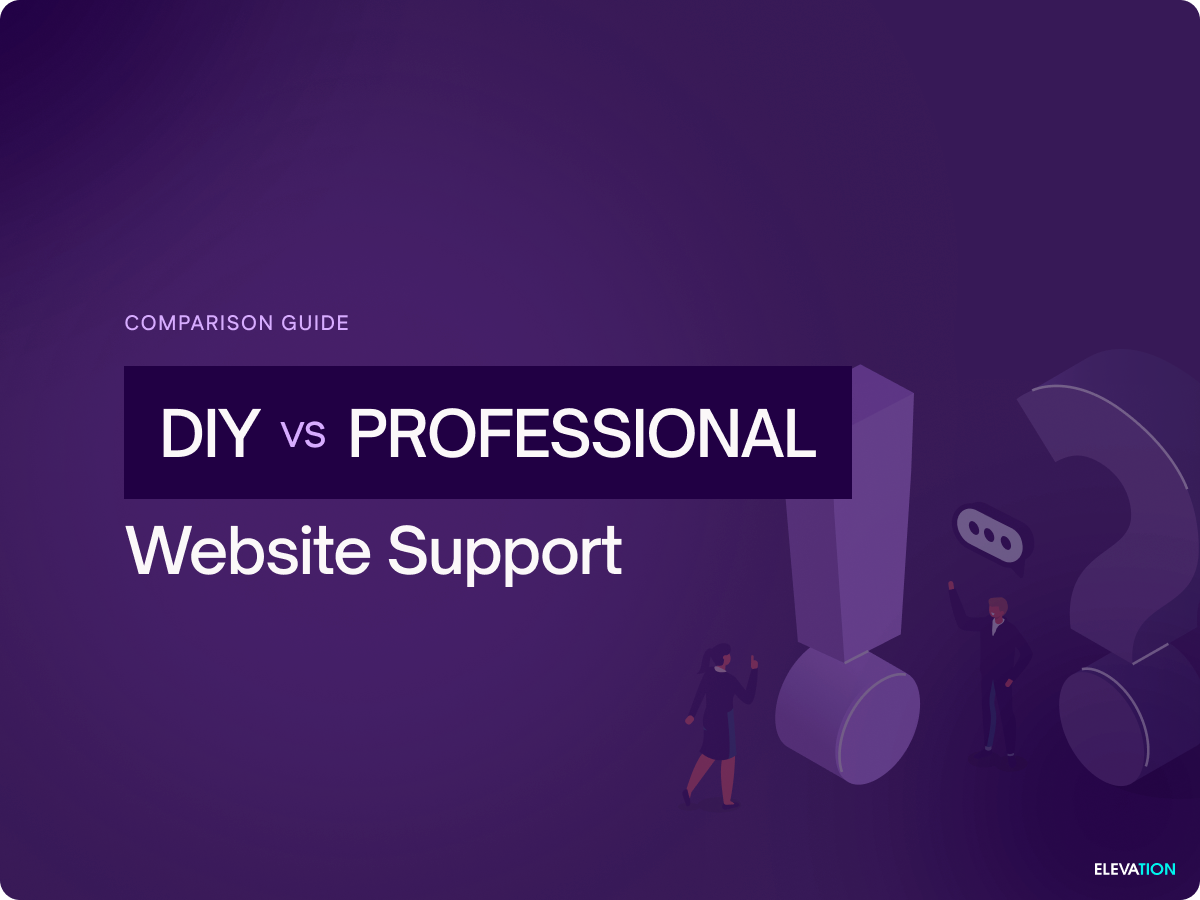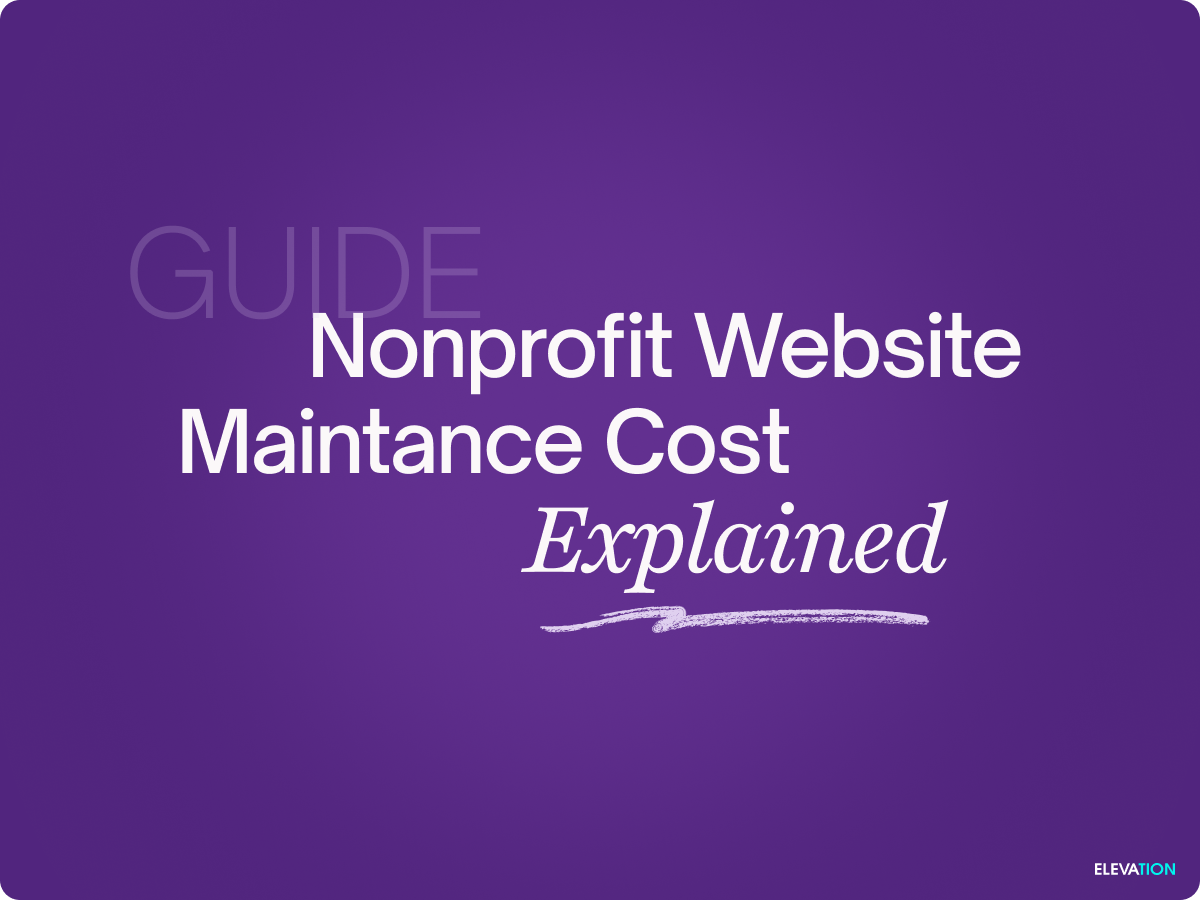
Common Maintenance Pitfalls to Avoid for Nonprofit Websites
Maintaining a website might seem straightforward at first glance, especially when things appear to run smoothly on the surface. However, even the most well-intentioned teams can make critical mistakes that jeopardize functionality, security, and user experience.
These missteps can hinder your organization’s ability to connect with donors, engage volunteers, and achieve your mission. The good news? Most website maintenance mistakes are easily avoidable with a bit of preparation and the right processes—like the top five we’ll cover in this guide.
1. Skipping Backups
Why It’s a Problem
Imagine waking up to find your entire website gone—whether due to a cyberattack, server crash, or accidental mishap. Without a recent backup of your website, there’s no way to retrieve the lost data. All your effort creating blog content, refining donation pages, and organizing event registrations could disappear in an instant.
Backups serve as a vital safety net, ensuring that you can quickly restore your site even in the face of the worst-case scenarios. Yet, many nonprofits either forget this crucial step or assume their hosting provider takes care of everything by default.
The Consequences
- Permanent Data Loss: Years of impact stories, donor acknowledgment lists, and other irreplaceable data can vanish.
- Prolonged Downtime: Without a backup, rebuilding your site from scratch takes time—and during that downtime, you lose engagement and credibility.
- Costly Recovery Efforts: Professional data recovery services, while an option, come with a steep price tag.
What You Can Do
Schedule automatic backups through your website’s content management system (CMS) or hosting provider. Most platforms, like WordPress, offer easy-to-use plugins for regular backups. Ensure backups are stored in multiple locations, including the cloud and external drives, for added security.
2. Ignoring Updates
Why It’s a Problem
Keeping your website software, plugins, and themes updated might seem like a minor housekeeping task, but skipping updates leaves your site vulnerable to crashes, bugs, and security breaches. Outdated software is one of the most common entry points for hackers targeting nonprofit websites, especially because these types of sites often handle sensitive donor data.
The Consequences
- Security Vulnerabilities: Hackers exploit known weaknesses in outdated software, putting your site at risk of malware or phishing attacks.
- Compatibility Issues: Skipping updates can cause conflicts between plugins, themes, and the CMS, resulting in frustrating bugs or broken functionality.
- Reduced Performance: Older software may not be optimized for speed, potentially slowing down your site and hurting user experience.
What You Can Do
Set up reminders or hire a professional to check for updates at least once a month. Always test updates in a staging environment before applying them to your live site to avoid accidental disruptions.
3. Forgetting to Test Forms
Why It’s a Problem
Forms are the backbone of nonprofit websites, collecting donations, enabling volunteer sign-ups, and registering event attendees. When these forms don’t work as designed, users can’t take the actions you’re encouraging—and you may not even realize it until it’s too late.
A broken donation form could mean lost funding, and an unresponsive contact form could cost you valuable leads. Worse yet, unresolved form issues can frustrate users and make them question your organization’s professionalism.
The Consequences
- Lost Donations and Engagement: A single broken form could result in hundreds—or even thousands—of dollars in lost support.
- Reduced Trust: Potential supporters may hesitate to trust an organization when even basic interactions feel unreliable.
What You Can Do
Regularly test all forms on your website, especially those for donations and sign-ups. Submit test entries to ensure forms:
- Accept data correctly.
- Forward submissions to the proper email address or database.
- Load confirmation pages or send automated responses.
4. Not Monitoring Downtime
Why It’s a Problem
Your website may not be accessible at all times, even if you’re unaware of it. Server crashes, performance bottlenecks, or hosting provider outages can leave visitors staring at an “error” message instead of interacting with your content.
Occasional downtime is inevitable, but if it happens frequently or goes unnoticed for too long, it damages your nonprofit’s credibility and frustrates users. Worse, downtime leads to missed opportunities, such as donors unable to complete their transactions or volunteers failing to register for events.
The Consequences
- Loss of Credibility: A website that’s often inaccessible can make your organization seem unreliable.
- Lower Ranking on Search Engines: Frequent downtime impacts your SEO, pushing you further down search results.
- Missed Opportunities: Key interactions with donors, volunteers, or partners may be lost due to outages.
What You Can Do
Use tools like UptimeRobot or Pingdom to monitor your website’s availability. These services will notify you immediately if your site goes offline, letting you address issues quickly.
5. Treating It as a One-Time Task
Why It’s a Problem
Website maintenance isn’t something nonprofits can tackle once and forget. A site requires ongoing attention to remain functional, secure, and aligned with your goals. Treating maintenance as a one-time effort often leads to complications later, including outdated content, emerging vulnerabilities, and declining user engagement.
The Consequences
- Decreased User Experience: Without regular refreshes, your site grows stale and fails to meet shifting expectations.
- Missed Updates or Security Patches: Lack of ongoing maintenance leaves your site vulnerable to attacks.
- Loss of Donor and Volunteer Interest: Users may stop visiting an outdated or poorly functioning website.
What You Can Do
Establish a routine schedule for maintenance tasks, such as backups, updates, performance refreshes, and accessibility checks. Assign these responsibilities to team members or a professional support partner to ensure consistency over time.
How to Avoid These Mistakes
Addressing website maintenance doesn’t have to be complicated. By putting systems in place, even small nonprofit teams can stay ahead of these common pitfalls. Here’s how to make it work:
Simple Processes
- Create a Checklist: Document essential maintenance tasks, such as monthly updates and quarterly audits, to stay on track.
- Automate Where Possible: Leverage technology to handle backups, updates, and performance monitoring on autopilot.
Partner with Reliable Support
If capacity is limited, consider outsourcing to professionals specializing in nonprofit website maintenance. They’ll provide both the expertise and dedicated time to keep your site running smoothly, allowing your team to focus on your mission.

Lessons Learned
Website maintenance is a critical operational priority for nonprofits, yet it’s often overlooked until something goes wrong. By proactively addressing these five common mistakes—skipping backups, ignoring updates, forgetting to test forms, not monitoring downtime, and viewing maintenance as a one-time task—you can safeguard your website’s effectiveness and build trust with your audience.
The fixes are straightforward with the right processes and partnerships in place. Not sure where to start? Partner with trusted nonprofit marketing providers like Elevation for expert guidance in maintaining a website that reflects your organization’s professionalism and impact.

